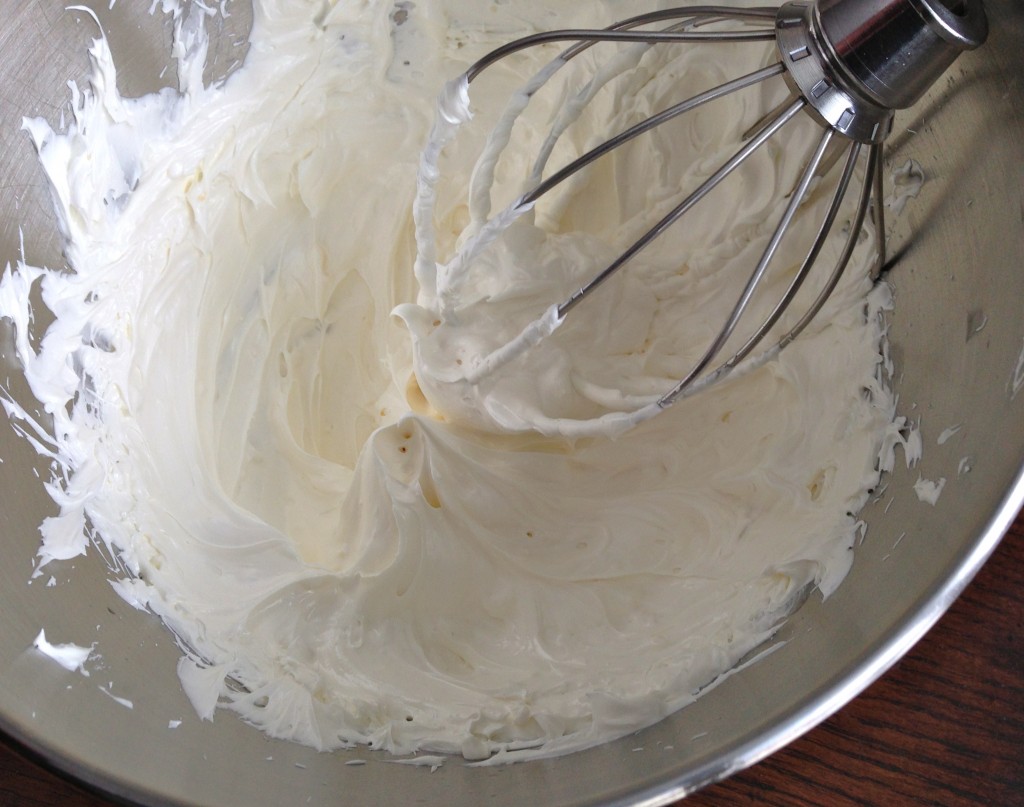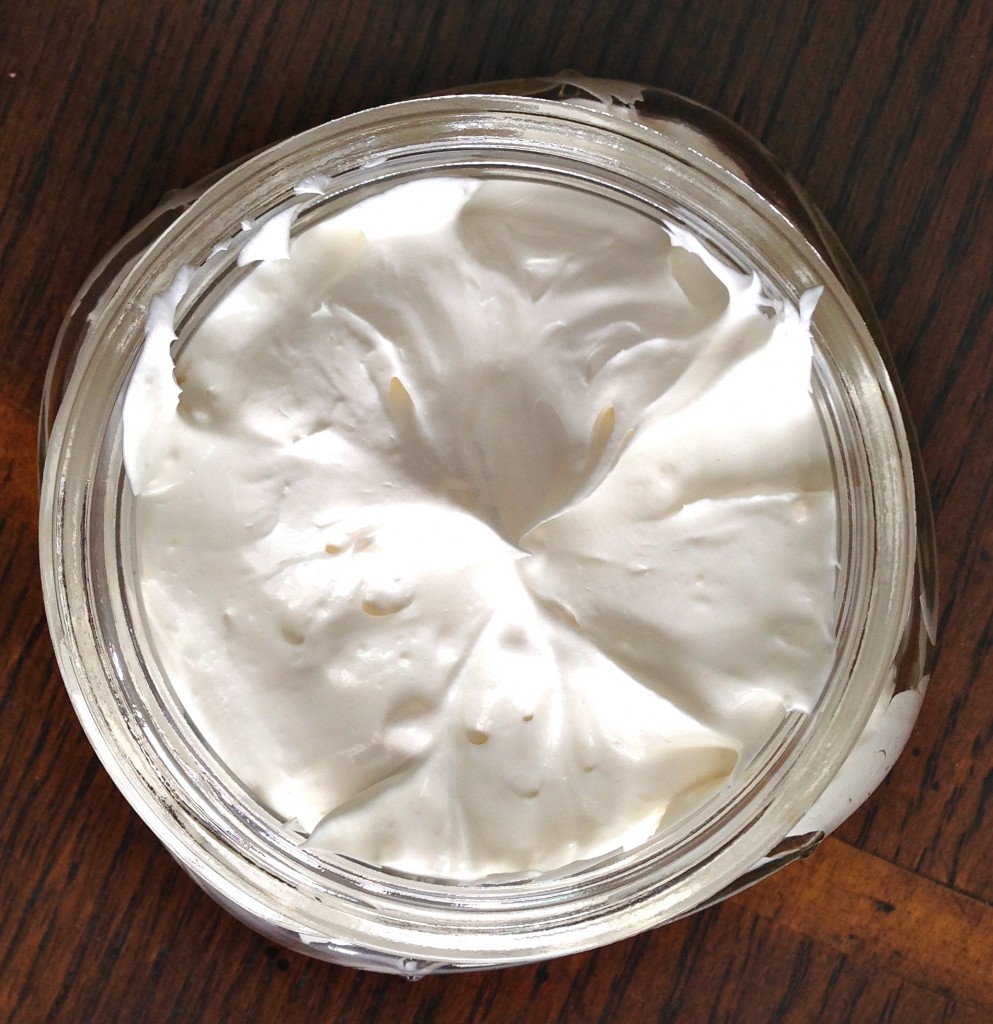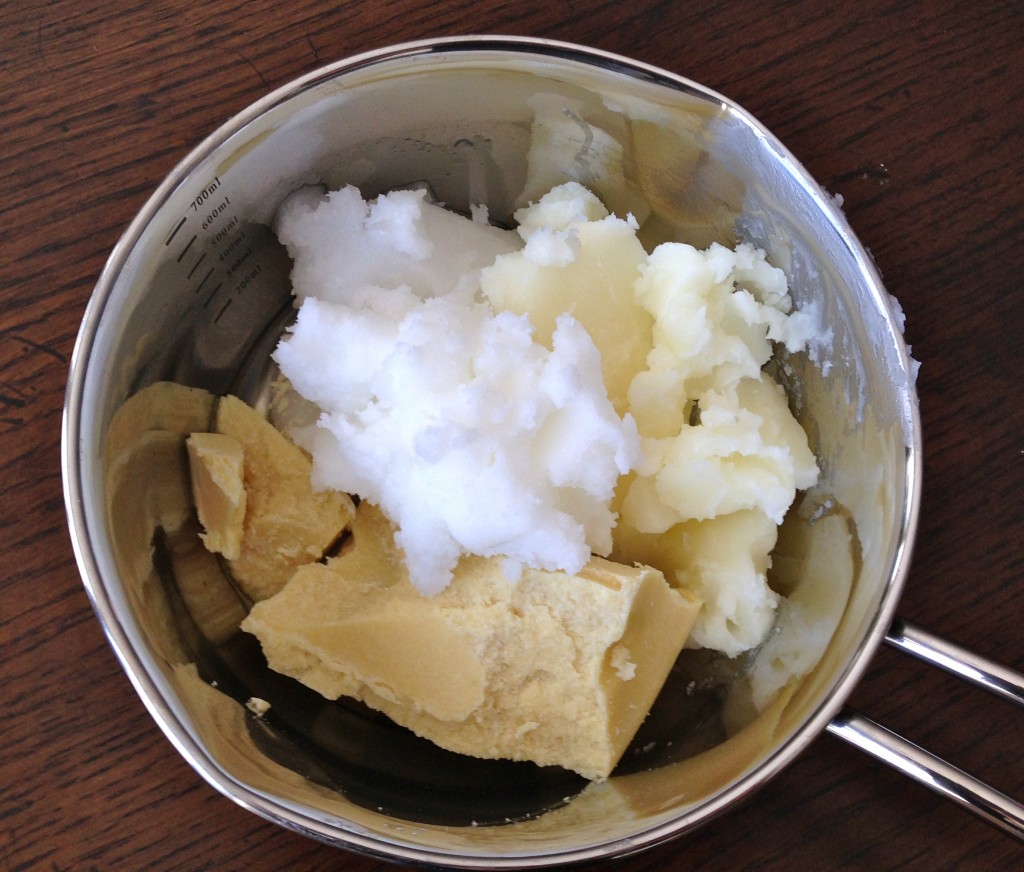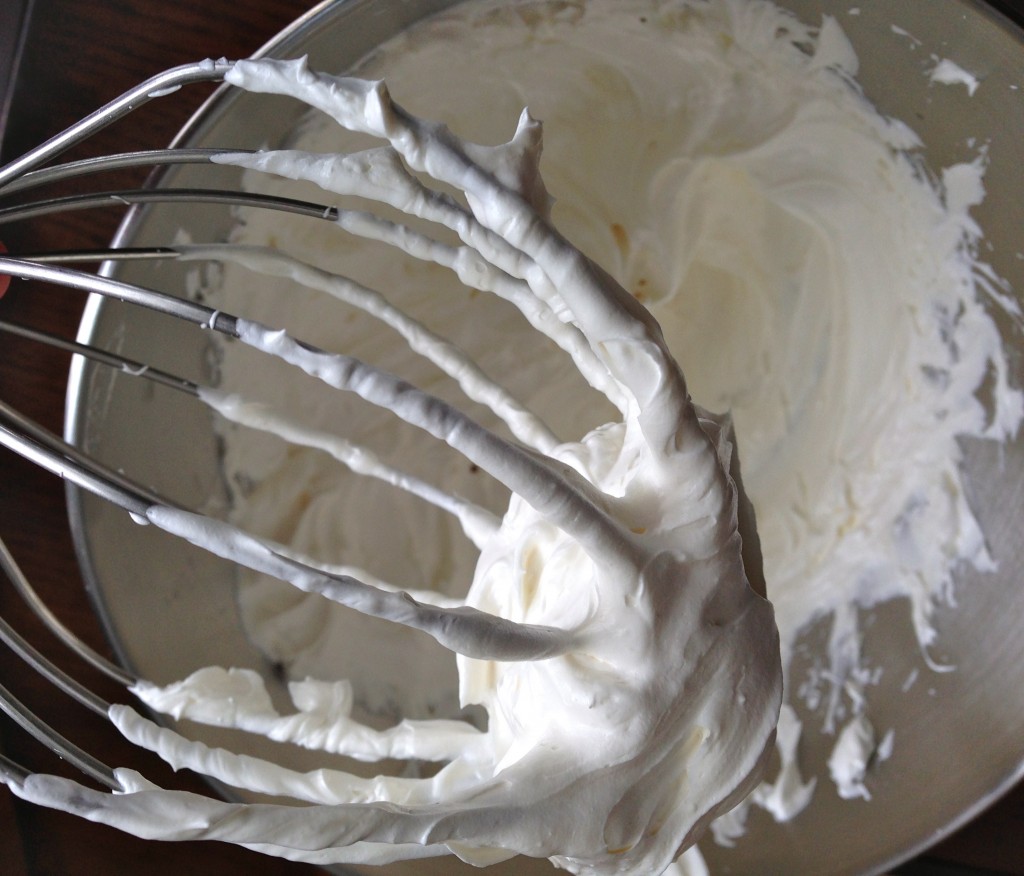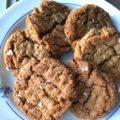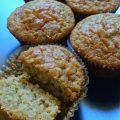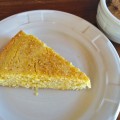This looks good enough to eat! Every ingredient is food-quality so it’s safe, but it would probably taste pretty disgusting. You will be much happier if you just rub it into your hands, face, and all over your body.
Part of pursuing a healthy lifestyle is being aware of what products we put on our skin. As the largest organ in the body, our skin absorbs the chemicals it is exposed to.
Read the ingredients list on skincare products much as you would labels on food products. Be aware that many ingredients in processed foods and in health & beauty products are “approved by the FDA”, but not necessarily good for you.
Here are a few things to avoid in skincare products (this is a very incomplete list, but a place to start):
- Alcohols (Ethyl and Isopropyl): Used as a solvent, alcohols destroy the skin’s pH balance and defensive barrier, leaving the body open to infection
- Aluminium: May be related to nerve damage and brain disorders such as Alzheimer’s, as well as increasing the risk of breast cancer (check your deodorant)
- Bentonite and Kaolin: Found in make-up, it smothers the skin and prevents respiration, causing the skin to dry out (bentonite is also used to suffocate forest fires)
- Petrolatum: Prevents the skin from taking in oxygen and respiring out waste, and interferes with skin’s own moisturizing ability
- Propylene Glycol: Used in personal care products as a humectant, surfactant and solvent, its small molecular weight allows it to enter into the body and has been shown to cause liver and kidney damage — it’s other main use is as anti-freeze!
- Sodium Laureth, Lauryl Sulfate (SLES/SLS): Widely used in shampoo and soaps, side effects include damage to children’s teeth, estrogen mimic, hair loss and dandruff, but the main concern is that it builds up in the heart, kidneys, liver, lungs and brain
- Triclosan: Used in cleansers, antibacterial gels and toothpaste, the EPA considers it a pesticide and highly toxic, and it accumulates in the liver, lungs and kidneys
I don’t claim to have all of this figured out, but with aging, sensitive skin and a heating season that lasts half of the year, my skin needs lots of moisturizer.
- For safe – and affordable – hydration, try hyaluronic acid and vitamin C serum. (Hydration is different than moisturization! Skin needs both to thrive.)
- For a great microdermabrasion-type face mask to make at home, try this easy recipe.
- And my go-to retinol face and neck oil can be found here.
Body butter is easy and fun to make, and the result is a quality product that costs less than $1 per ounce.
There are 4 categories of ingredients to include in great body butter:
- Solids – oils that are firm at room temperature, but liquid when warmed – mango butter, coconut oil, shea butter, cocoa butter, babassu oil, etc. These oils make up about 85% of the body butter. Choose a couple! (this batch had 4 kinds, because I was running low on several of them)
- Liquids – oils and waxes that are fluid – avocado oil, vitamin E, jojoba oil, meadowfoam seed oil, evening primroase oil, argan oil, etc. These can’t surpass 15% of the body butter. I purchase ingredients in bulk from an online apothecary.
- Powders – these are totally optional, but I like adding powdered aloe vera for its healing and soothing properties.
- Essential Oils – not only do these make the product smell nice, they have beneficial qualities for skin – myrrh, cedarwood, frankincense, and carrot seed oil are in every batch I make. Just make sure you use high quality essential oils, such as Young Living or Neways brands.
Melt the solids over very low heat, then add the liquids. Put them into the bowl of a stand mixer and lightly mix in powders, if using. Chill until cloudy, but not solid. Whip them until peaks form – it will resemble meringue! Depending on the temperature of your house, this could take a while. The friction of whipping might also cause it to melt, making it necessary to chill the bowl a second time.
Add the essential oils and whip for another few seconds, until combined. Scoop into containers and store at room temperature.
A little body butter goes a long ways! Keep a container in the shower to smooth over still-damp skin. Keep another in the kitchen to use after washing dishes (no chemicals to transfer to food!) Smooth a small amount over your face and neck at night. Use it as lip balm. Rub into the ends of dry, damaged hair. Substitute for shaving gel. There are hundreds of ways to use body butter. Just don’t try to frost cupcakes with it! 🧁
Print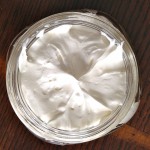
Best Body Butter
Description
Chemical free, wonderful and fluffy, moisturizing and soothing…
Ingredients
- Approximately equal amounts of at least two solids, such as coconut butter, mango butter, shea butter, cocoa butter, babassu oil, argan butter
- Liquids that can include avocado oil, vitamin E oil, jojoba oil, meadowfoam seed oil, evening primrose oil, argan oil – must be less than 15% of the mixture
- Powders – 1-2 Tbsp of aloe vera powder
- Essential Oils – those particularly beneficial for dry skin include frankincense, lavender, cedarwood, carrotseed oil,
Instructions
- Melt solids over very low heat, then stir in liquids
- Transfer to bowl of stand mixer and gently whisk in powders, if using
- Chill bowl until ingredients are cloudy and beginning to firm up, but not solid
- Whip until peaks form, chilling the bowl as needed. Add essential oils during the final “whipping”
- Scoop into containers, and store at room temperature


